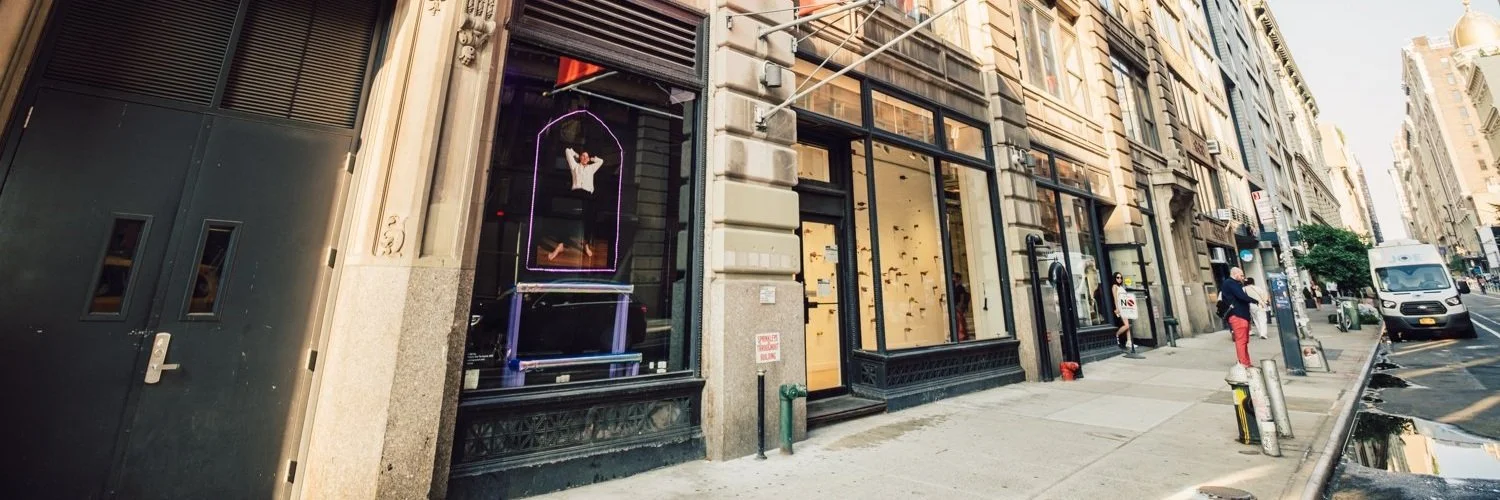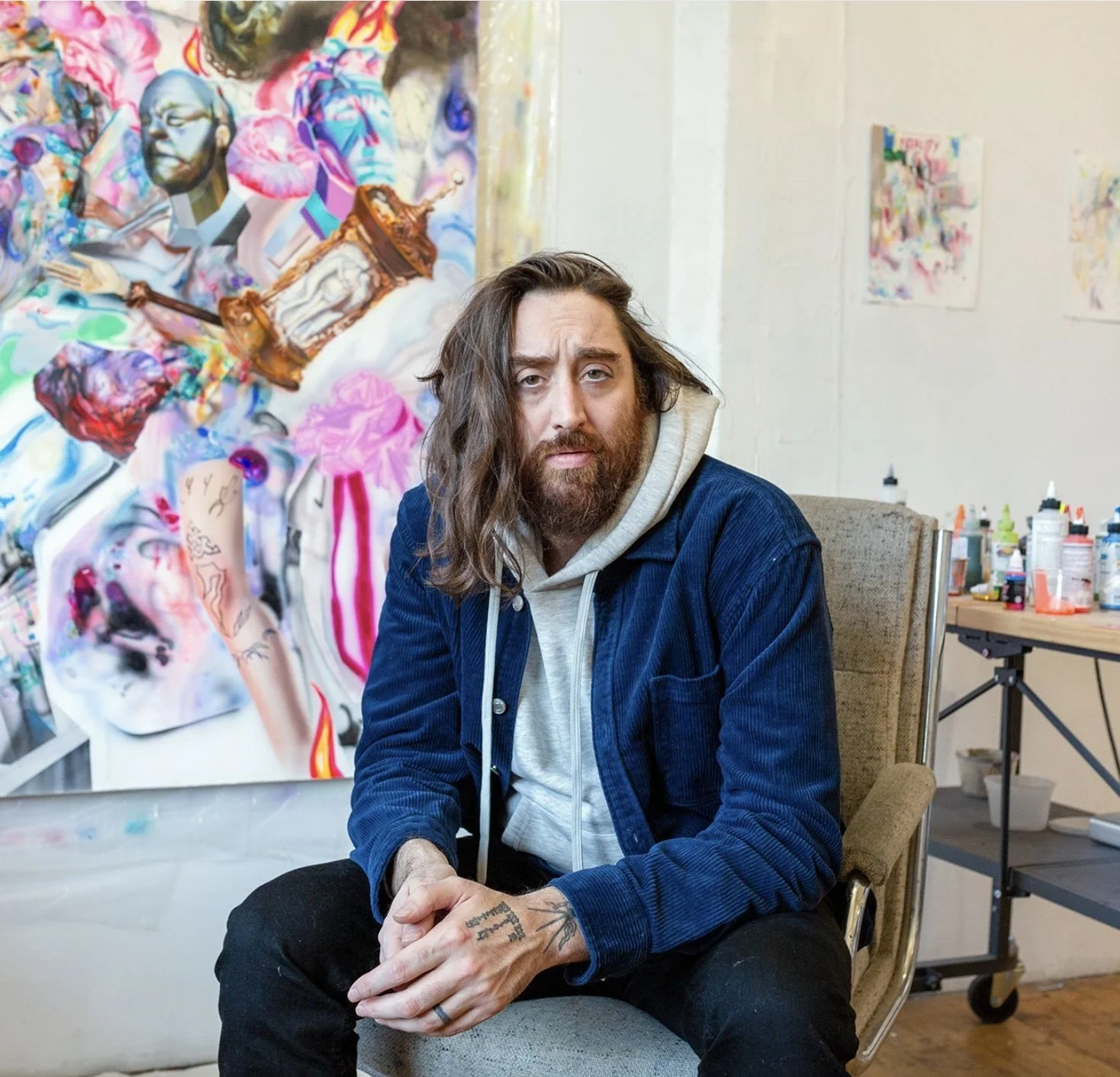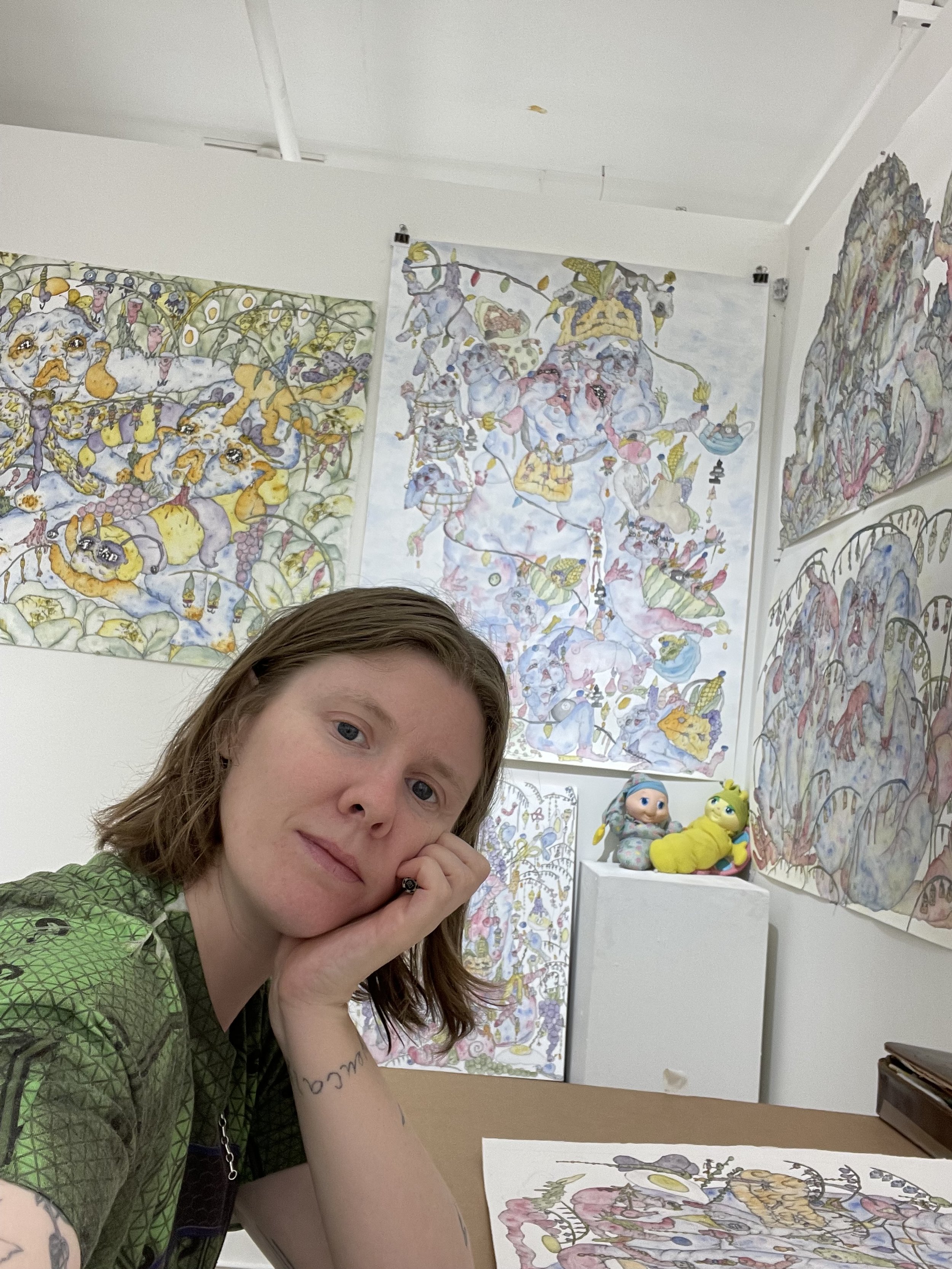Introducing the revised, ultra-low residency MFA Art Practice
The MFA Art Practice program at SVA is an interdisciplinary, low residency graduate program designed for artists who seek both flexibility and academic rigor.
Combining the prestige of a School of Visual Arts (SVA) degree with the convenience of a hybrid model, the three-year program includes six semesters of online coursework and three intensive summer residencies in New York City.
This fully interdisciplinary program empowers students to work across mediums through an approach that blends theory, experimentation and production. We consider the creative process a form of critical inquiry and foster a global community of artists and cultural producers who challenge conventional thinking about what matters in contemporary art.
Upon graduation, MFA candidates earn a terminal degree from one of the world’s leading art and design institutions. Our alumni go on to exhibit internationally, secure prestigious residencies and grants and teach art at the college level.
Click here to submit an inquiry and learn more about the program.
-
The MFA Art Practice program’s course of study addresses a wide range of intellectual, aesthetic, technical and practical concerns. An underlying thread across the curriculum is the ability to situate one’s creative practice within a thoroughly considered social context.
Our low-residency model includes:
Three intensive nine-day summer residencies on SVA’s campus in New York City’s Chelsea arts district.
Six semesters of highly interactive, media-rich coursework completed remotely.
Ongoing small group mentorship from leading contemporary artists, curators and critics.
The program cultivates an environment that supports experimentation, collaboration and risk-taking. Students engage in research-driven practices and are encouraged to work across disciplines, combining traditional and emerging media, technologies and techniques.
In their final year, students present their thesis work during the Summer Symposium, providing them with the opportunity to exhibit their work publicly in New York City.
Degree candidates must successfully complete 60 credits, including all required courses.
CHECK BACK SOON FOR FULL 2026 COURSE LISTINGS
STUDENTS WHO ENROLLED PRIOR TO FALL 2026
The MFA Art Practice program’s course of study addresses a wide range of intellectual, aesthetic, technical and practical concerns. An underlying thread across the curriculum is the ability to situate one’s creative practice within a thoroughly considered social context.The program’s low-residency framework comprises three intensive summer residency periods on SVA’s campus in the heart of Chelsea in New York City, and four semesters of rigorous, highly interactive rich-media coursework that can be completed from anywhere in the world. Throughout the program, each artist also works under the close guidance of an assigned mentor.
Artists in the program engage in research-based practices, and are encouraged to converse and collaborate across subject matters using a combination of traditional and non-traditional media, technologies and techniques. Students combine personal narrative with critical theory to create works that comment on societal issues. The atmosphere is one that promotes experimentation without fear of failure.
Degree candidates must successfully complete 60 credits, including all required courses. The final summer semester includes the public presentation of a thesis project and accompanying written thesis document.
See the full course listing here.
-
The MFA Art Practice fosters sustained engagement with leading voices in contemporary art, connecting students to internationally recognized artists, curators and critics. Through small, semester-long mentor groups, students receive personalized guidance, critique and professional insight in a focused, supportive environment.
-
Residency Experience
Each summer, students gather for an intensive nine-day residency on SVA’s campus in New York City’s Chelsea arts district — home to one of the world’s most vibrant concentrations of art galleries and cultural institutions.
These residencies are a cornerstone of the program: a time to share work in person, build community and engage in immersive critique, conversation and exhibition-making. Students participate in workshops, artist talks, studio visits and faculty-led seminars that connect them directly to the pulse of the contemporary art world.
While the majority of coursework is completed online, the residency provides a rich context for reflection, collaboration and artistic growth within the creative energy of NYC.
-
The MFA Art Practice is designed to remove traditional barriers to earning a top-tier MFA. With a significantly lower cost than comparable programs and a flexible, low-residency format, students can decide how best to structure their time, space and practice.
The program tuition structure is transparent at $1,000/credit, offering a competitive rate that promotes accessibility and allows students to plan their funding without waiting to hear about additional awards.
-
How will the revised residency requirements affect the VISA application process?
We are currently working with SVA’s International Student Office (ISO) to determine how the reduced residency requirements will affect the VISA application process. We encourage you to submit an inquiry so that we can provide you with more information once it becomes available. Otherwise, you can check back here for updates in the near future.Can international students apply to this program?
Yes. This school is authorized under federal law to enroll nonimmigrant alien students. Please see the international applicant's section on the SVA web site for the application requirements specific to you.Can I apply for the F-1 student visa?
Once you have received an offer of admission and submitted your enrollment fee, a sufficient and official (original) Declaration of Finance form (DOF) and Verification of Finances (VOF, a bank statement or letter), a SEVIS Form I-20 will be issued to you by mail. You must take these forms with other required documents to your local U.S. embassy or consulate. Required documents include a valid passport, the original letter of acceptance from SVA, evidence of financial support, proof of permanent residency outside of the U.S., the visa application form, two photographs in a specified format, and the receipt of your $200 SEVIS fee payment. You must repeat this procedure each summer in your home country before the start of the summer semester.How long can I stay in the U.S.?
Students can be admitted to the U.S. 30-days before the summer semester begins, and stay for 60-days after the summer semester end date on a "grace period." Since MFA Art Practice students are not enrolled full time in the Fall and Spring semesters, students cannot stay in the U.S. on the F-1 visa during those times. This is because by law, full-time enrollment (minimum of 12-credits at SVA) is required to maintain a valid visa status. The Fall and Spring semesters of the MFA Art Practice program are offered online only and total less than full-time enrollment (total of 9 credits). By law, no more than one online course may count towards full-time enrollment. For this reason, we cannot sponsor the visa during the Fall and Spring semesters.Am I eligible for F-1 visa benefits, such as employment eligibility?
Federal regulations are very strict about employment for F-1 students. MFA Art Practice students are only eligible to work on-campus during the summer semesters. They are not eligible for paid or unpaid off-campus employment or internships.What are the English language requirements for the program?
A strong command of both spoken and written English is essential for success in the MFA Art Practice program. Participants must be comfortable reading and engaging with theoretical texts. A written thesis, between 15 and 50 pages is also a requirement for graduation. Therefore, MFA Art Practice applicants must obtain a minimum score of 100 (internet-based) or 250 (computer-based) TOEFL to be considered for admission to the program. -
Successful applicants will have completed a full undergraduate education and have been granted a BA, BS, BFA or the equivalent. Applicants are not required to have an undergraduate degree in fine arts. Most candidates will have between two and five years experience as a practicing artist beyond their undergraduate education. However, we expect that some students may come directly from an undergraduate degree program. Applicants should be fluent English speakers and writers and be able to demonstrate technical proficiency in at least one visual art form. Because of the nature of a low residency program, candidates must demonstrate a high level of professional discipline, be self-reliant, and be prepared to take significant personal responsibility for the successful completion of their graduate program. Applications submitted on or before December 9 will be considered for early decision. The preferred general application deadline is January 15.
Applications open in September.
Faculty Spotlight
Andrew Woolbright
Graduate Seminar III
Who do you most admire?
”People who have practices that build space and context for others–Adrian Piper, Mary Kelly, Meyer Shapiro, TJ Clark, Phong Bui, Raphael Rubinstein.”
Student Spotlight
DW Zinsser ‘25
DW Zinsser is a visual artist living and working in New York City. Zinsser work explores the resilience of the fluid body through repetitive mark making.








